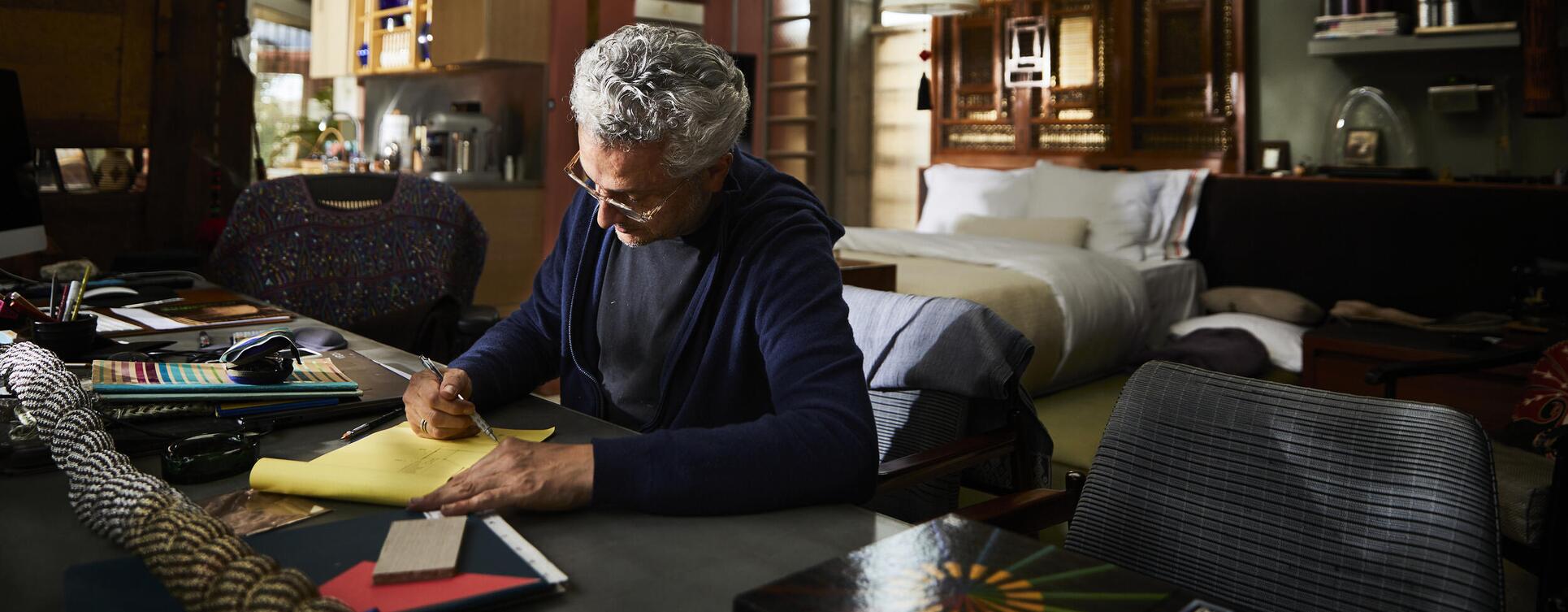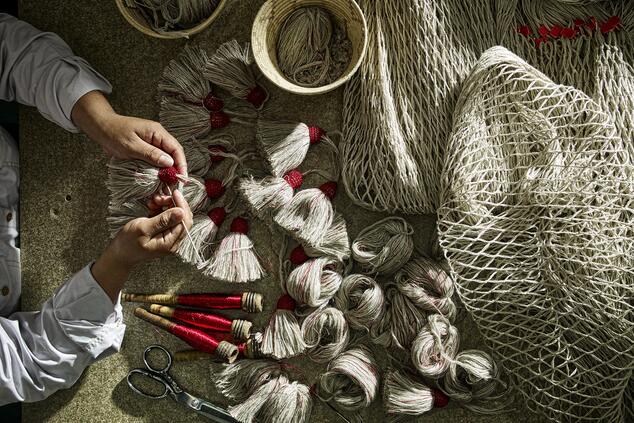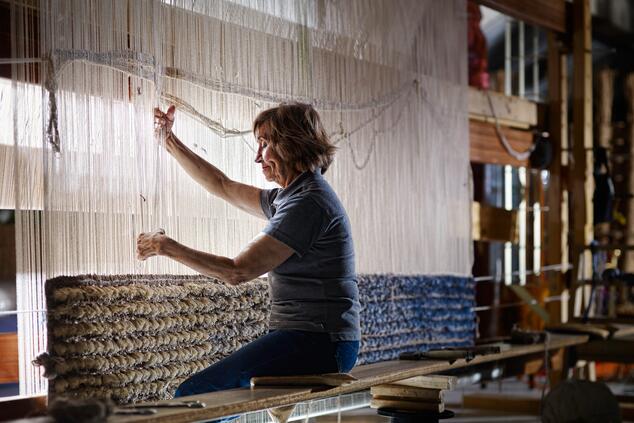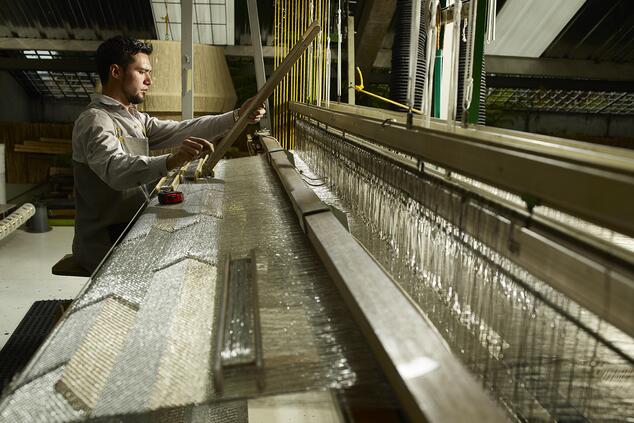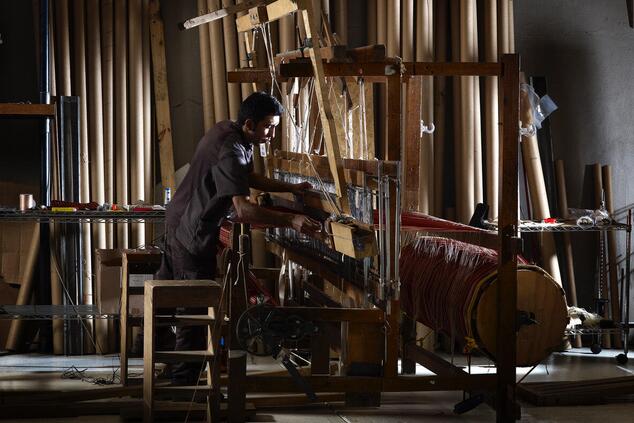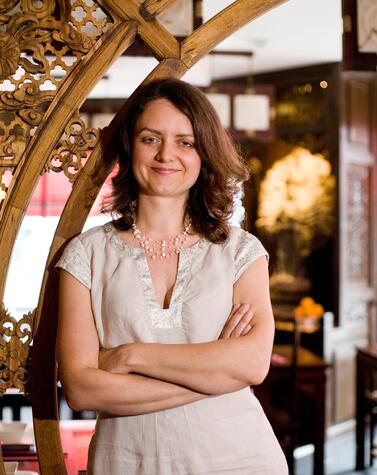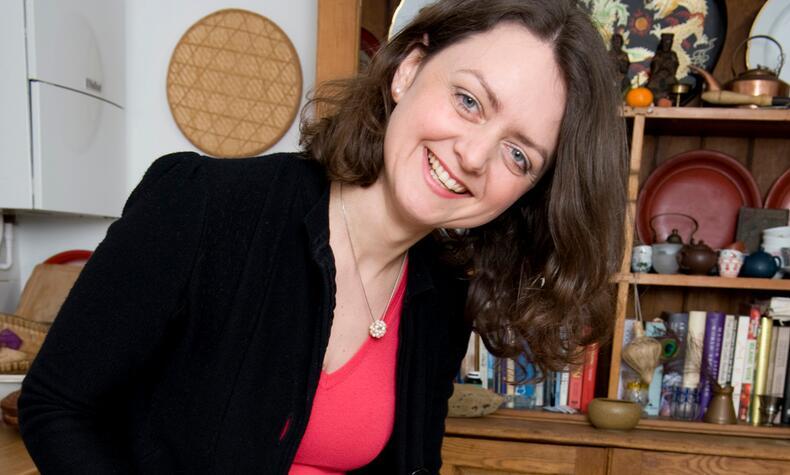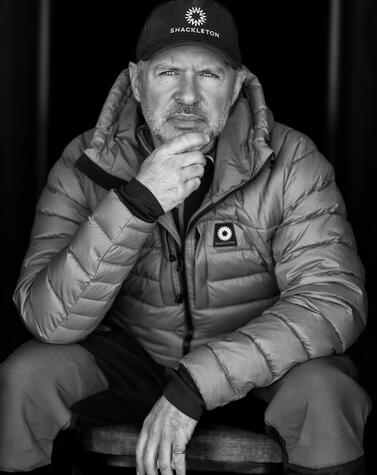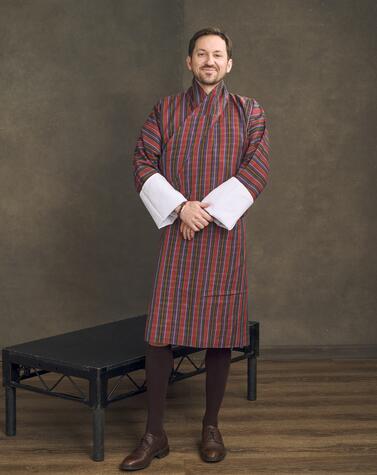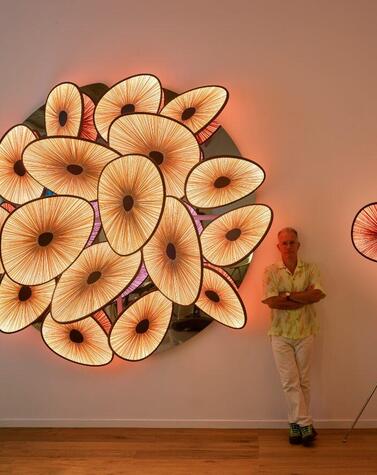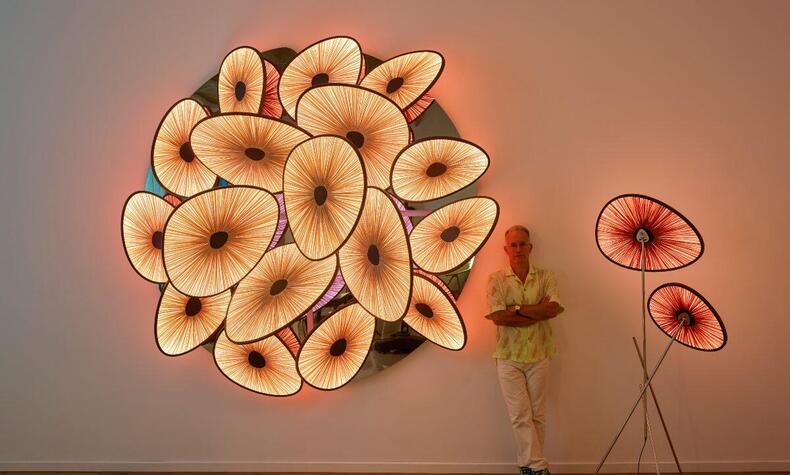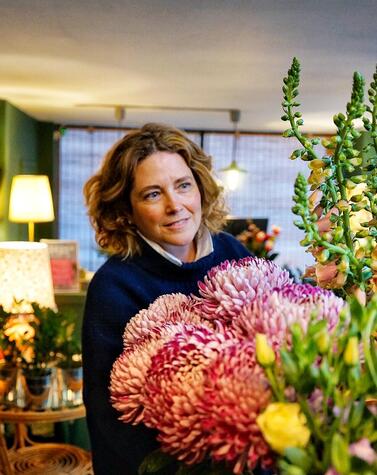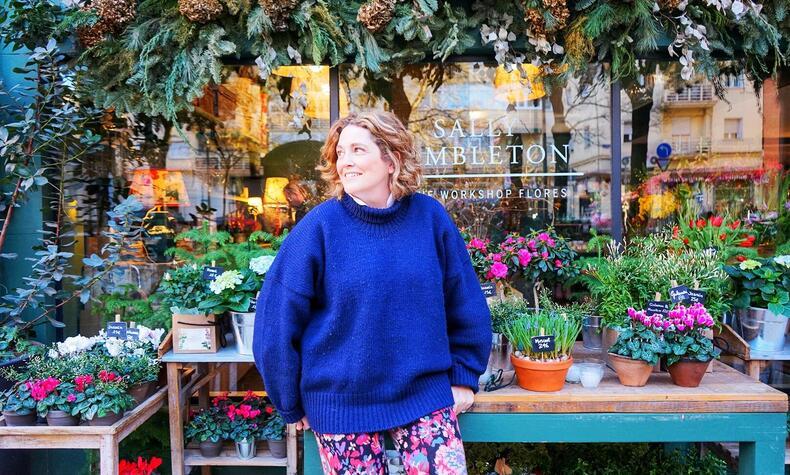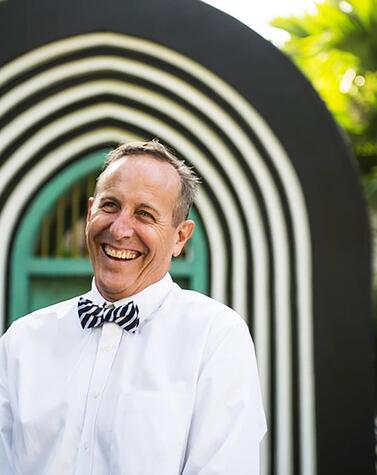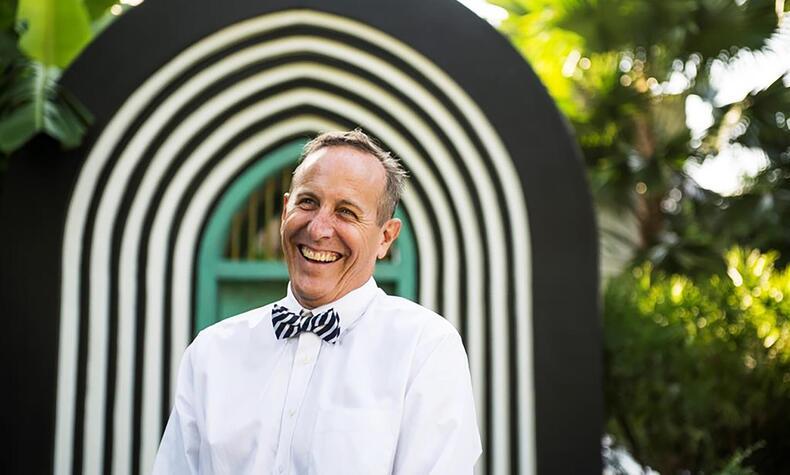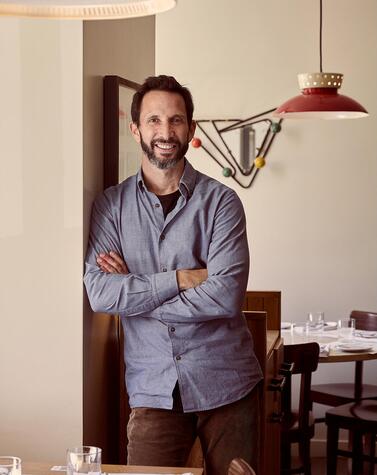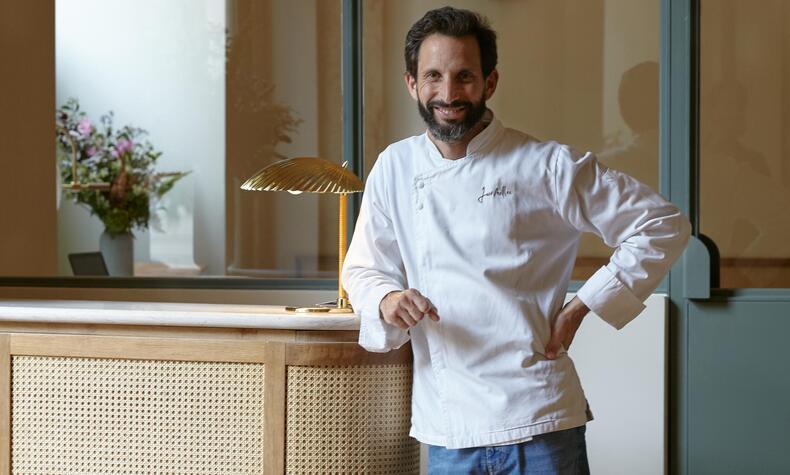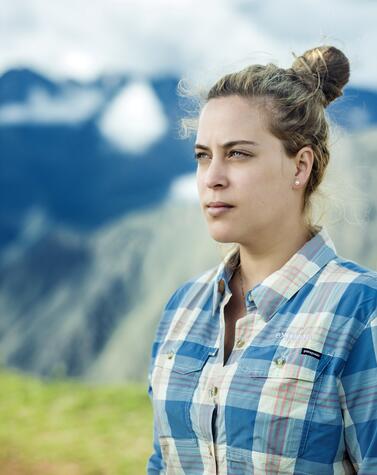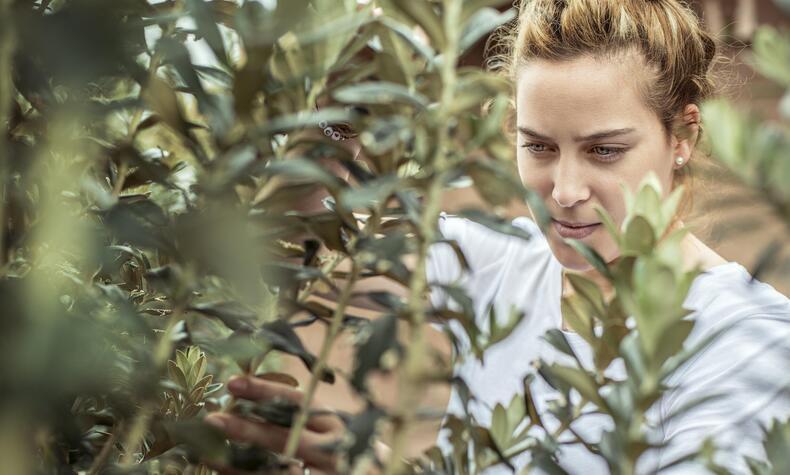Jorge Lizarazo: "Inspiration comes from concerns"
Jorge Lizarazo is a Colombian architect and textile designer who, from his hechizoo workshop in Bogotá, has conquered the world of fashion, interior design and art with his handmade rugs, tapestries and fabrics using gold, silver, copper and tin threads that he wisely mixes with vegetable fibers from places as remote as the Amazon or the Andes.
His hechizoo workshop, which has been in existence for more than 20 years, is located in an old warehouse in southern Bogota, in one of the poorest neighborhoods of the city. There, more than 60 master craftsmen patiently weave by hand the exclusive and luxurious textile pieces that will have as final destination big fashion firms, prestigious architecture studios, art galleries, celebrity mansions or palaces of royal houses from different parts of the world.
Who is Jorge Lizarazo?
Jorge Lizarazo is a person who likes to be with people and constantly observe his surroundings. He likes to always question himself and never think that the first idea is the best idea. He loves Colombia and the American continent. He likes to travel, he likes love, he likes memory and feeling that he has roots, he likes to feel part of something and, most of all, he likes to feel part of his team.
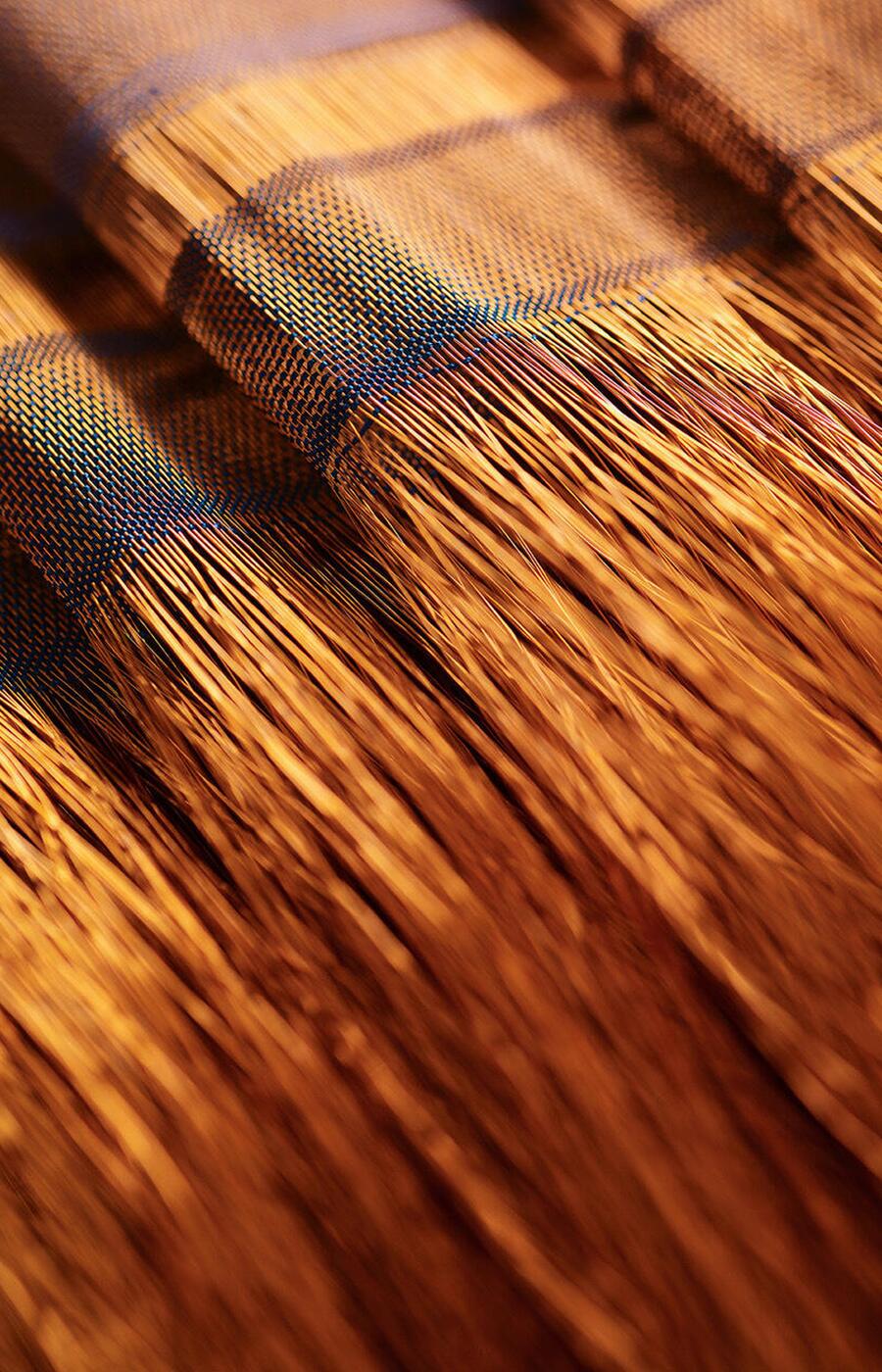
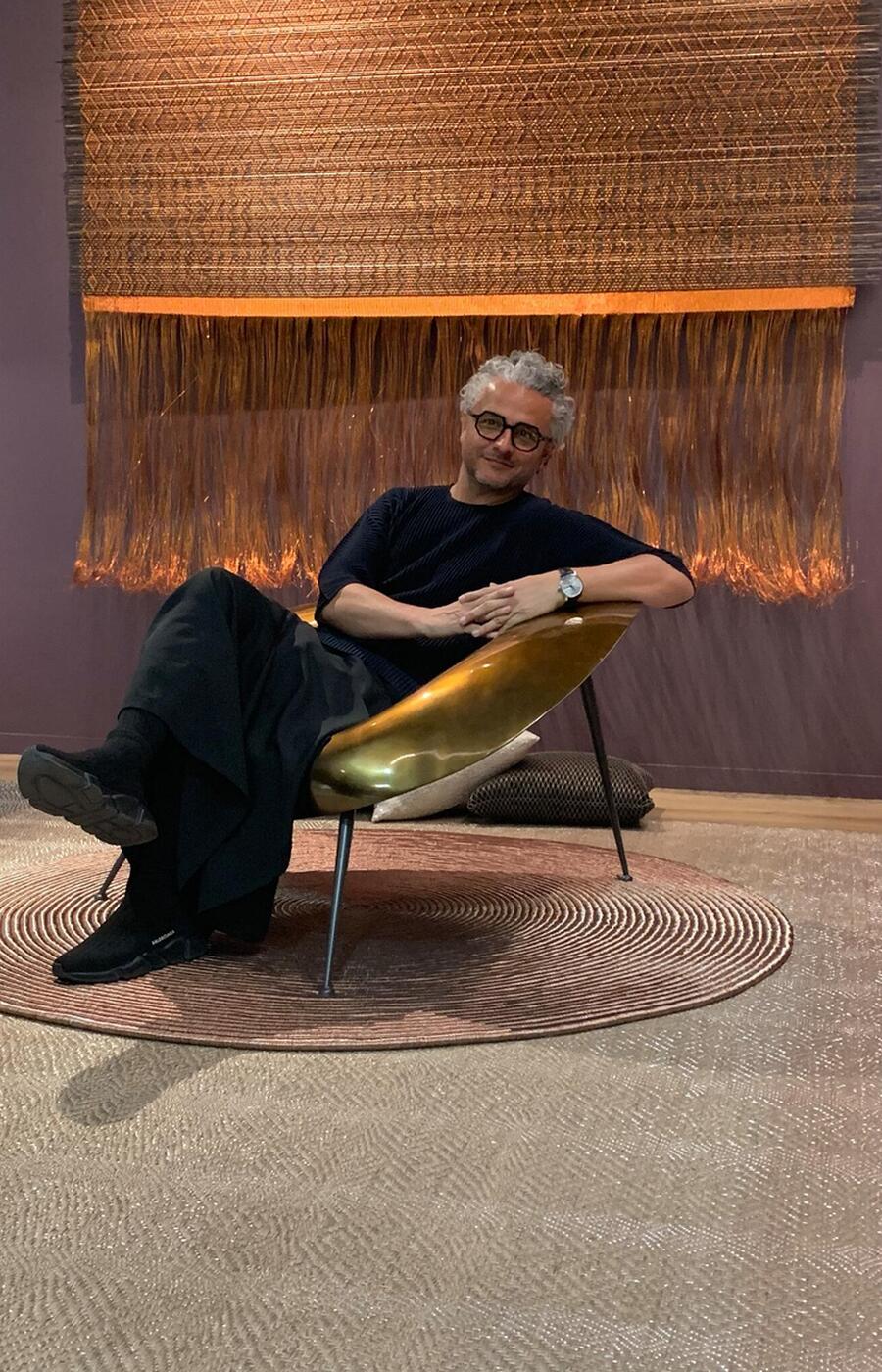
You are an architect by profession and a designer by vocation... what led you to start in textile design?
The training as an architect that I followed, first in Colombia and then in France, led me to study the Vienna school, the French and English classical school, and there I fell more and more in love with the marriage between architecture and textiles. Upon my return to Colombia, at the end of the 90's, after working with one of the greatest creators with whom I have had the privilege of working, Massimiliano Fuksas, I found a country in chaos, with a failed state and almost bent to drug trafficking and guerrilla, with a very beaten economy, but that was my country at that time, and yet I loved it and I love it!
It is said that all crises bring opportunities...
Yes, few possibilities were open to architecture and, within those opportunities that crises present you with, I found myself with the possibility of remodeling apartments and thus take a few small steps in interior design... there I found that the vast majority of interior design ingredients corresponded to a very different era than the one I had lived during a decade in Europe.
Not only in interior design, but also the architecture itself was very different in taste, as my father would say. I quickly had to get in touch with local weavers and so, as if out of nowhere I found myself in front of Liliana Jaramillo's looms. It was she who pushed me to become the weaver I am today.
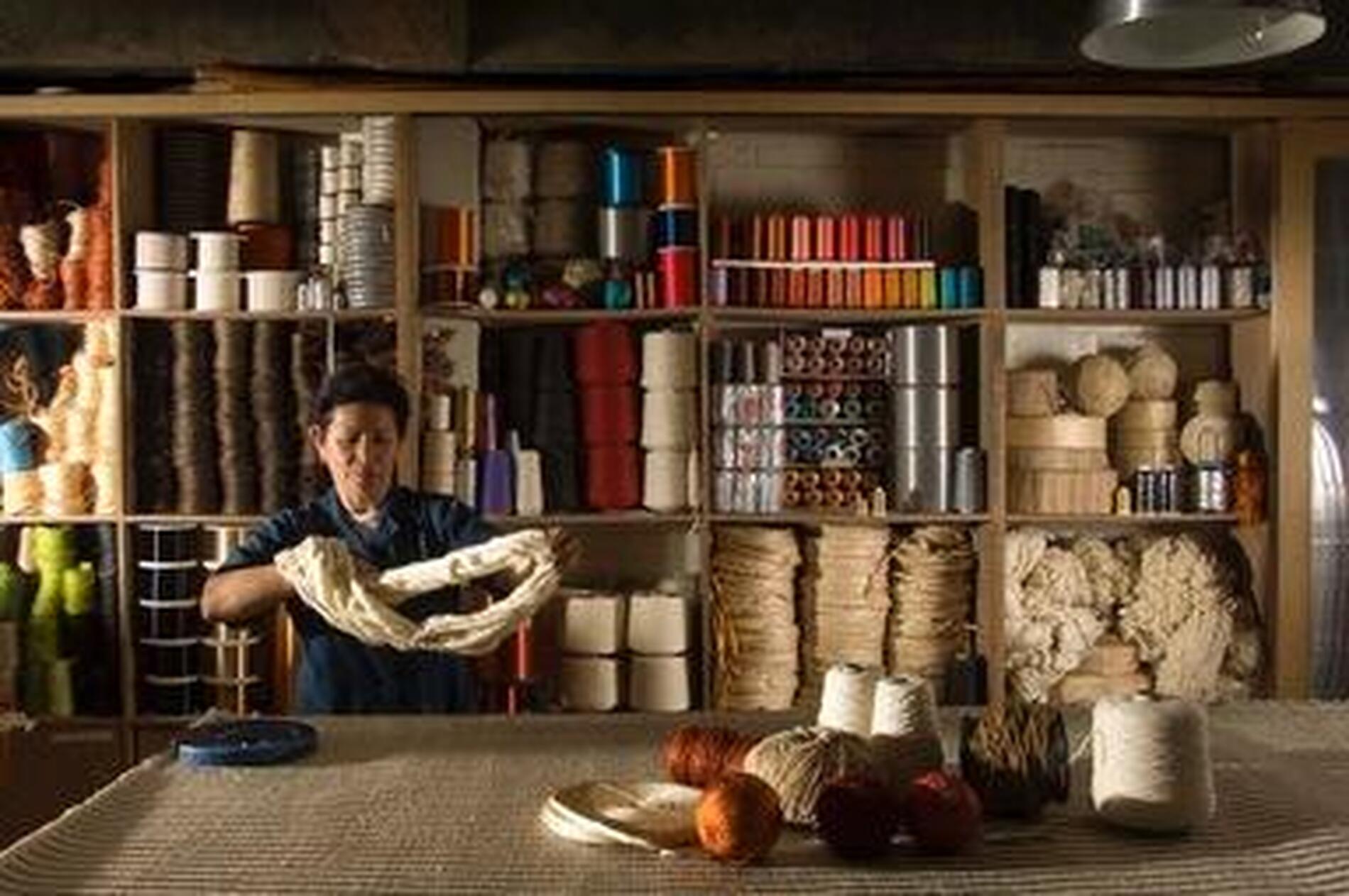
How did Jorge Lizarazo become hechizoo?
Jorge Lizarazo is just an architect who decided to temporarily abandon architecture to find in textiles a more fun way of doing architecture. Alone, he could never have achieved what hechizoo has accomplished. That name is what unites a group of artisans and professionals who today are proud to belong to the most beautiful workshop in America. We started with 4 people and the family extended to 60 direct people in the workshop and more than 35 peasant communities throughout Colombia.
Why hechizoo?
Hechizoo, the brand, comes from a play on words. The word "spell" has a meaning that transports us to magic, to enchantment, and the double "o" at the end, makes it lose just that reference. It is, in a way, the enchanted world and its creator, Alberto Herencia, a Spanish brand creative, additionally took care that its sonority was wonderful in all languages.
What is the design and weaving process you follow in your creations?
We cannot speak of a single process when designing. There are processes in which you follow instructions from designers you admire and where they, in turn, admire our work. It's a very interesting dance of knowledge, which is usually directed to a third person, who at some point will also be part of that party.
A second design process happens when you eventually meet directly that person who has been looking for you through this information-laden world. I really thank them for selecting us, because there are very beautiful options and it is an honor every time they call us with the intention that we design for them.
Then we design for the big brands and we are tremendously grateful that today some of our textiles are in some of the most beautiful boutiques in the world.
A fourth process comes from the work that is done with the galleries that represent us. They, experts in contemporary design, provide us like no one else with the elements to be at the forefront of the textile world.
And in the future?
Tomorrow we will surely follow a different line, more humble, more challenging... but we are ready to accept the challenges. There have been few times when we don't accept a challenge, but I have to admit that it has happened... we don't like to admit it, but, we are human and we have a limit: We don't copy and we will never risk our reputation by trying to cover more than we can.
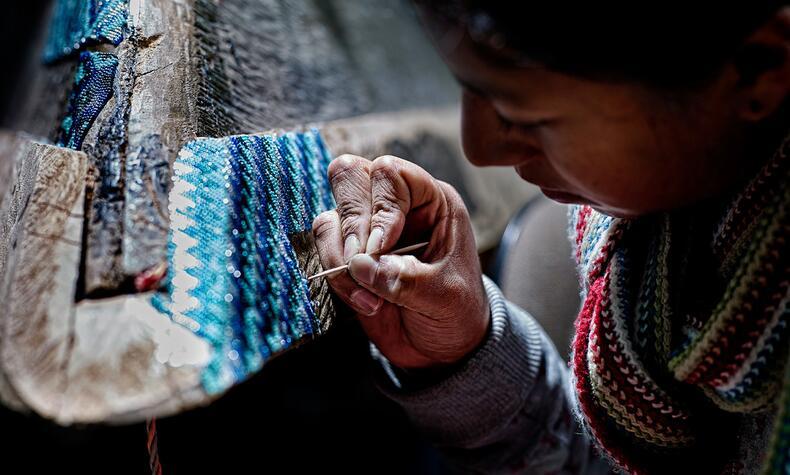
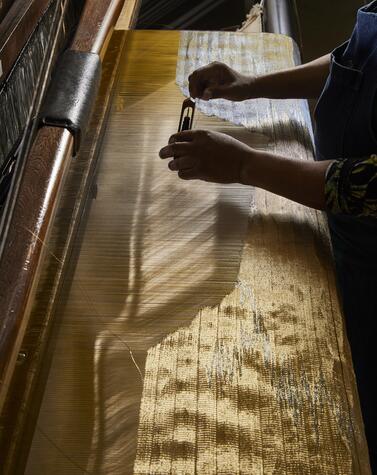
Does it hurt a lot to part with a unique piece?
It hurts until the moment you know that whoever takes it wants it more than you do. It's a fair exchange. There are some pieces that I remember with a lot of LOVE: A werregue basket feathered in metal feathers, a sculpture made of tea palm braids, yaré and metal filaments, a rug in homage to Barnet Newman... these are the three pieces that have remained in my memory and that I tell myself: "you should never have let them go" but, likewise, they helped build the workshop that today I call my home.
How important are colors and materials in your designs?
The soul of hechizoo's work is the constant search for new fibers. We started in 2000 with 4 fibers: Fique (a kind of Colombian sisal that grows in the Andes Mountains), cumare (a palm filament twisted by indigenous people in the Amazon with the palm of the hand and the knee), copper and tinned copper wire. Today hechizoo has more than 2,500 varieties of fibers, colors and gauges, which allow us to have a textile language as broad as the imagination allows.
The color and texture of our weavings come from the tropics, from the roots transmitted to us by our ancestors, our parents and our condition of mestizos! After our weavers, the fibers are in themselves the soul of hechizoo.
What criteria do you follow when selecting the materials you use in your designs and where do they come from?
The materials, their texture and color, connect in a very direct and unique way to our customers. It's almost as if you look at a restaurant menu and select the starter, the main course and the metal, almost always the dessert. This means that, in each of the pieces that hechizoo weaves, it is the customer, aided by our expertise, who selects: texture, pattern, shine and color.
I might add to this that the senses of touch and sight are what determine how the piece should be woven. We have at our disposal the most talented hands and, without them, ideas would be nothing, just ideas, but those ideas transformed by fibers, color and the most careful hands give us an infinite possibility of color and texture variations. Our fibers come from all over the world... they are found in travels and traveling they also arrive in our neighborhood 20 de Julio in Bogota.
You are considered a pioneer when it comes to using metal threads and braiding them with vegetable fibers in your fabrics. What does metallic bring to your creations?
We have always considered the use of metal, particularly copper, as part of Hechizoo's DNA. Copper has opened up an infinite possibility for us in the use of materials and combinations of materials. The contrasts that are created from the crossbreeding of fibers with metal... we create magical effects (hechizoos) almost involuntarily.
This has given us a unique stamp: the handling of light, the movement of patterns... The light that the metal transmits brings to hechizoo textiles its condition of being chameleonic... the daylight is very different from the night light. Metal brings to hechizoo one of its most important ingredients, surprise: The reflection, the silence of its touch, the temperature, its energy and its eternity
- Vegetable fibers such as this natural linen are combined with silver, copper and gold threads —
- Each piece is unique and the design and production process takes 4 to 5 months —
- One of the hechizoo artisans weaving a piece on the loom with silver metal, bronze and aluminum —
- Photos: hechizoo
What would be the most eclectic mix of materials you have used in your designs?
Mongolian horsehair with metal and silk is and will be the world champion!
Wherein lies the magic of that alchemy of threads that turns a seemingly fragile fiber into a solid and resistant fabric?
The hechizoo textiles reflect the importance of teamwork. Just as a fiber by itself does not have much meaning or importance, when they are joined together and begin to compose that piece that was born only from words, is when the magic begins. After several passes of fibers achieve solidity and, at that moment, the words become fabric.
A beautiful textile is usually fragile, like the spiders that weave their marvelous webs, robust for one use, but fragile for any other. Thus, a spellbinding textile that is inappropriately placed or used will suffer the consequences of its fragility.
In a scientific, industrial, world of the immediate? how does the artistic, artisanal, manual, the slow fit in?
Just as we had to understand that the time of the indigenous and artisans of the countryside is not the time of urban dwellers, our clients understood from the beginning that time is one of the fundamental ingredients of the process, not only of production, but of creation.
One of the most important assets of this contemporary world is precisely time. You get the money, but... Time, who gets it back? Cristina Grajales, our mother gallery owner in New York, once told me. So we understood that, if we say 4 or 5 months, we have to meet that deadline. That is the respect for our clients. It's not enough to be beautiful and well done, it must be done on time, like a good cake... if it's overdue, it may never reach the table.
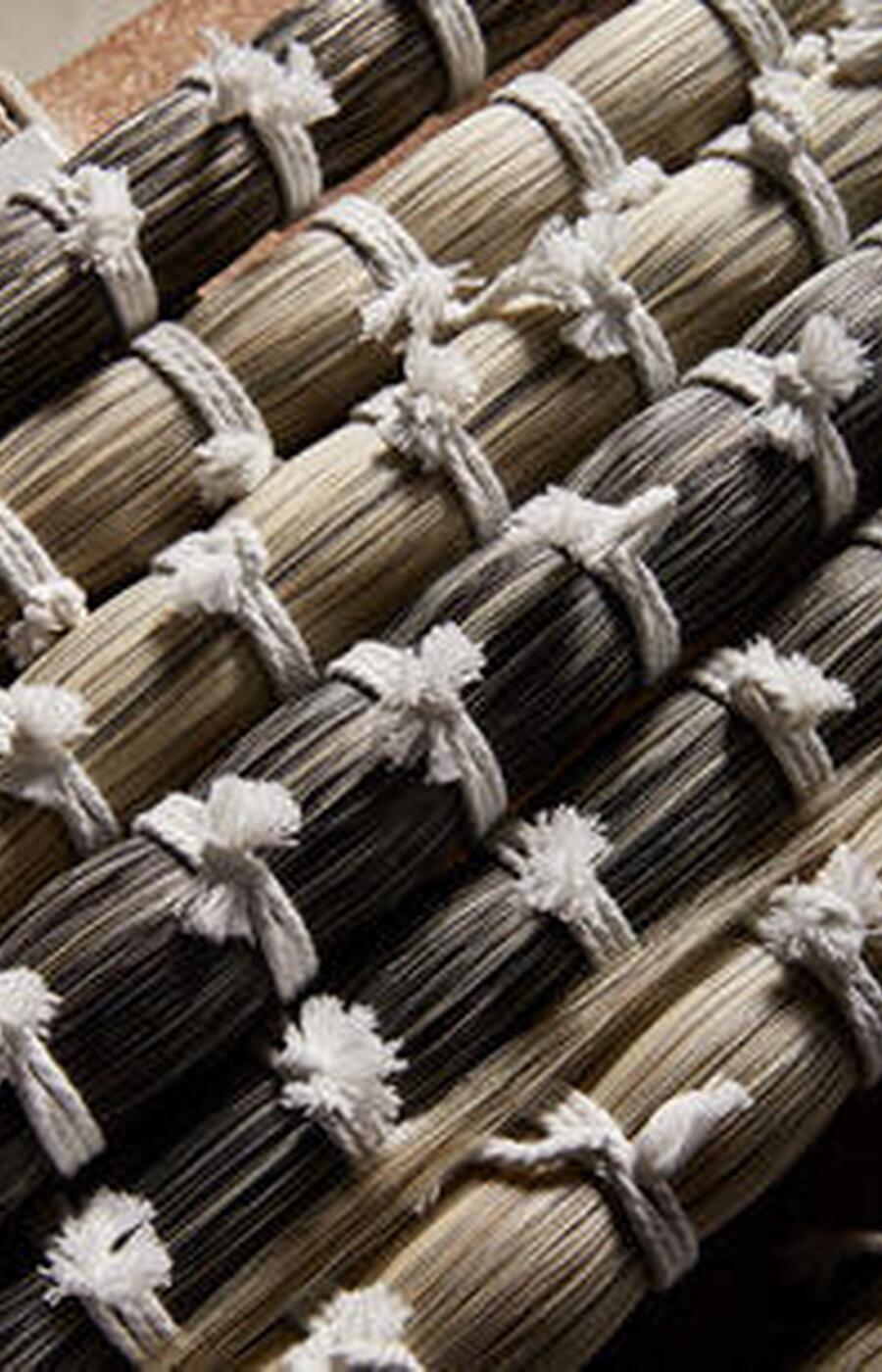
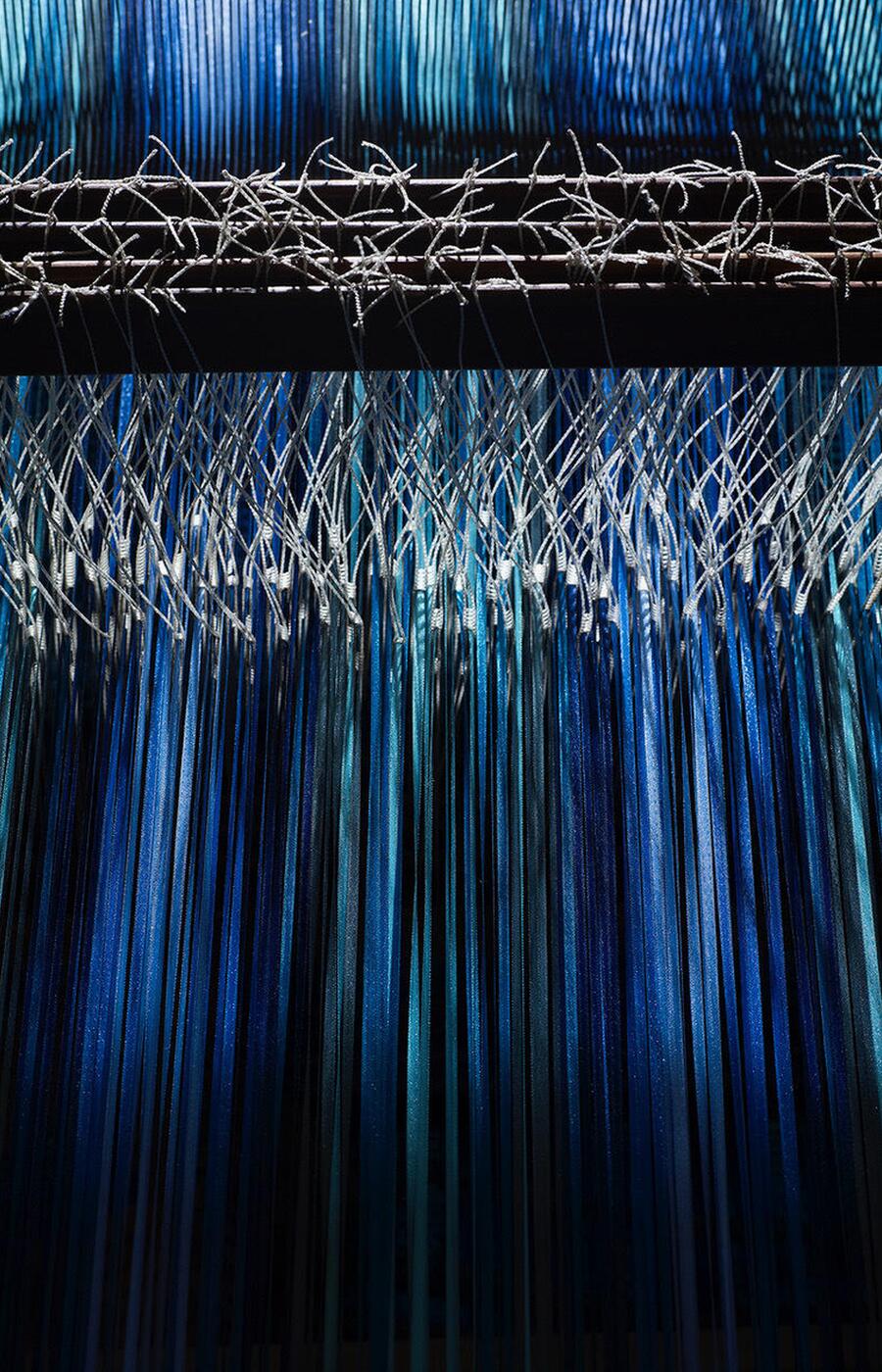
Where do you find inspiration?
Inspiration mostly comes from the concerns that accumulate in your head, it's like a check-list that is written as you travel, as you have emotionally strong moments, moments in which your environment changes, and all these moments add up to this list. These are the measures through which this beautiful score of the story of hechizoo has passed.
What is the importance of your city Bogota and the Colombian and indigenous culture in your creative imaginary?
Hechizoo would never be the same if it were in another part of the world. Bogota is home to more than 9 million people, some Bogotanos, but more than half come from the different cardinal points of my country and abroad. Hechizoo is nourished day by day by the popular bogotano, therefore the popular Colombian.
Everything we breathe, everything we dance, everything that makes us Colombians is in the textiles of hechizoo: Indian, black, Spanish, Creole, mestizo, white, etc.. All this represents us and we represent it with pride but, the incredible thing, is that when someone outside hechizoo sees a textile sample, they don't know for sure where it comes from. And that's one of hechizoo's greatest gifts to the textile world. We can be tribal, minimalist, eclectic...No one can categorize us. We can only make an impact and be loved or unloved.
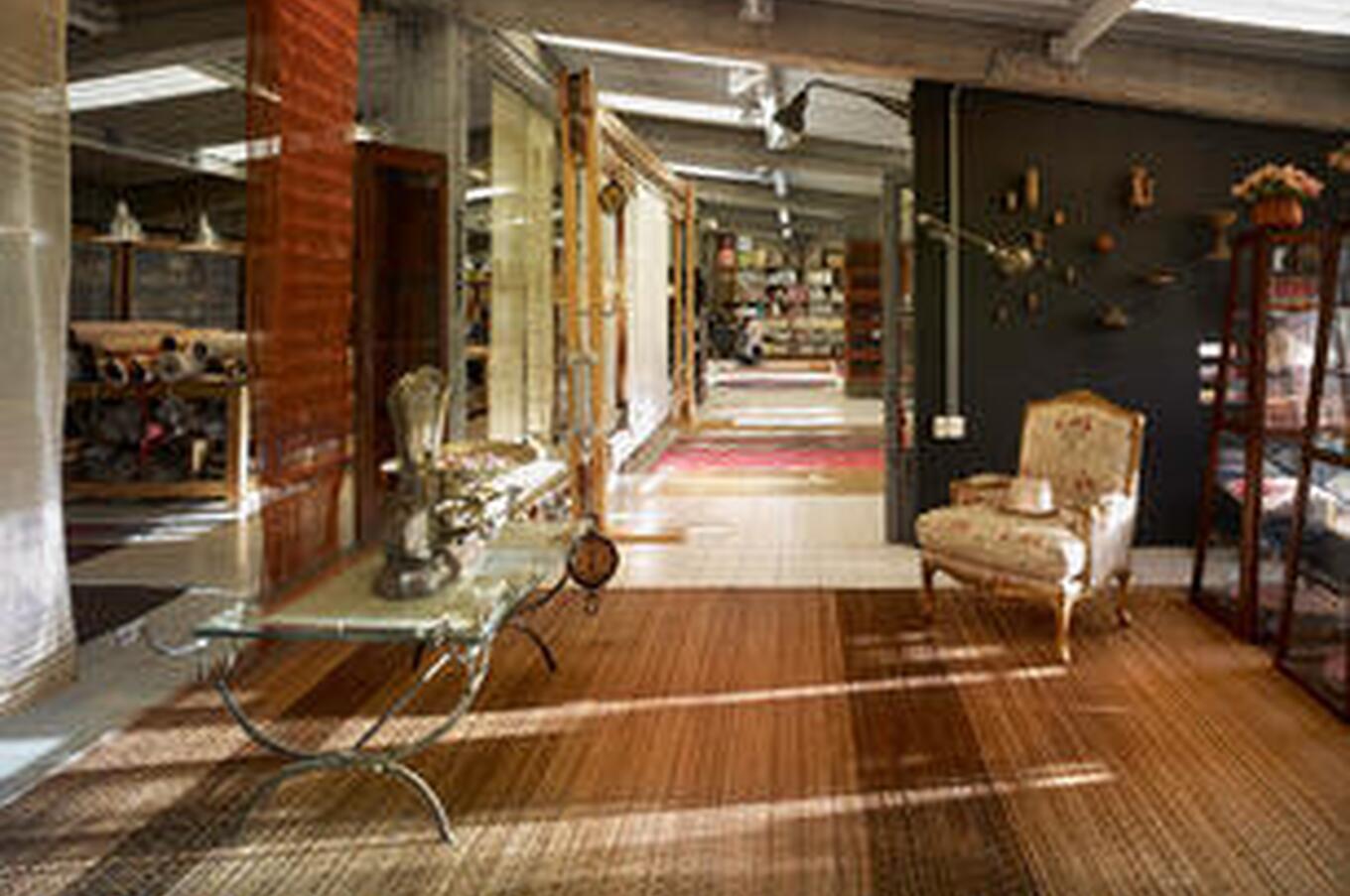
What is a real client like?
A client is a human being who is looking for us to understand his space, his family and his being. A hechizoo client is someone who takes a risk to make a decision that is not based on what they have already seen but on what is yet to come. It is someone who loves surprise above all and who loves his space and its light.
What do you feel about having to create pieces for a palace, for example?
Sometimes I think it is a fortune to be in these places, but how many pieces are there in a palace: thousands! We prefer to be in spaces where we are the kings, where we have the ability to be the protagonists of that life that begins or continues with a new light.
We know that you travel more than 150 days a year? what role do travels play in Jorge Lizarazo's life? What do you travel for and what do you learn on each trip?
If I didn't travel around this wonderful planet we would be the workshop we didn't want to be. We would be a silent witness who would watch the world go by on the computer or on television or who would hear stories from third parties and, let me tell you that there, no matter how hard production companies and countries try every day to bring the world closer to you, you don't get to see absolutely nothing of what inspires us: The history of man, how wonderful his development is and how unique and different we are even in the same country, even in the same city where you live.
Travel nourishes the soul. The hechizoo textiles are a small summary of what we learn when we leave home. In these moments, I wonder if we will travel again as before: I think it will be different but, moving for some like me, it is part of their own life...

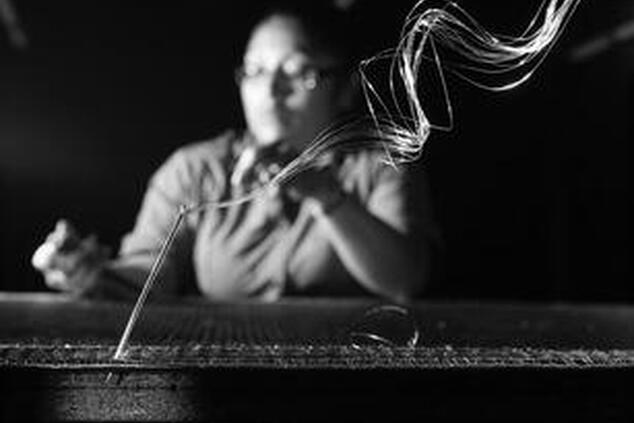
A unique and unforgettable trip?
Japan, always Japan, the country of my spirit, the country of the rising sun that planted in me the best memories with my late husband. The country that inspires my next great exhibition and where I long to take my new love.
What does luxury mean to Jorge Lizarazo?
Luxury depends on many things. Yesterday I was out in my car on these streets near my workshop and I met one of these characters who cleans the windows of the car, kind, humble and full of needs. He gave me a smile when he saw me. That was my luxury yesterday, to see that in all beings there is kindness and joy. In my daily luxury, what I miss most is silence, and with it, beauty. Two luxuries that, for me, should always go hand in hand.
